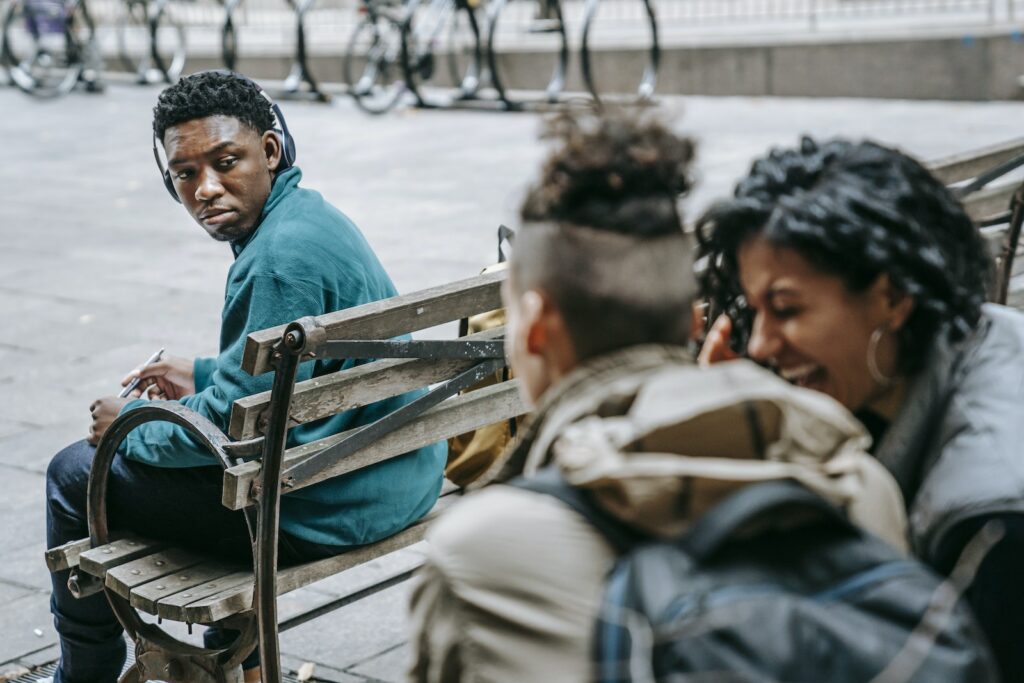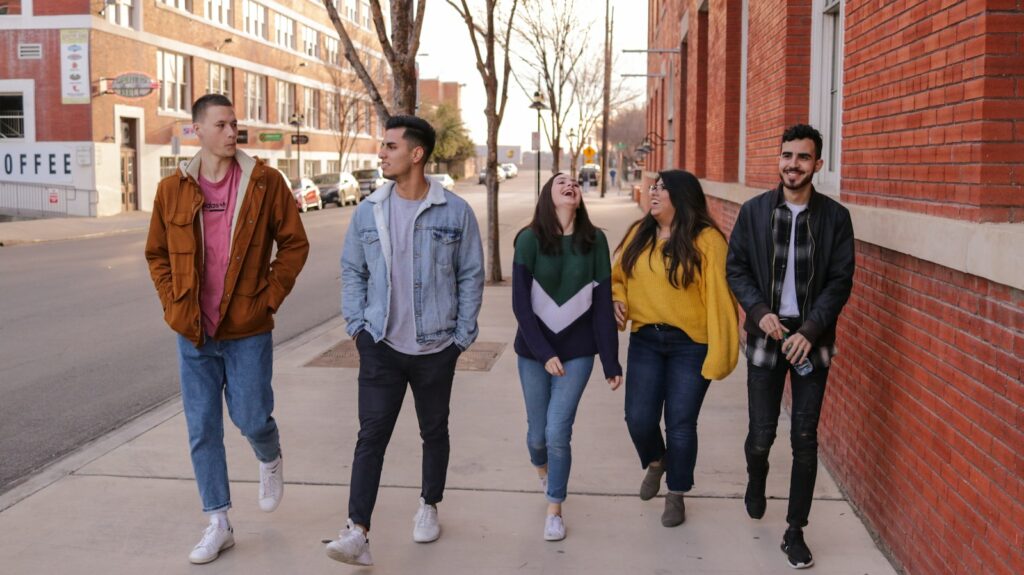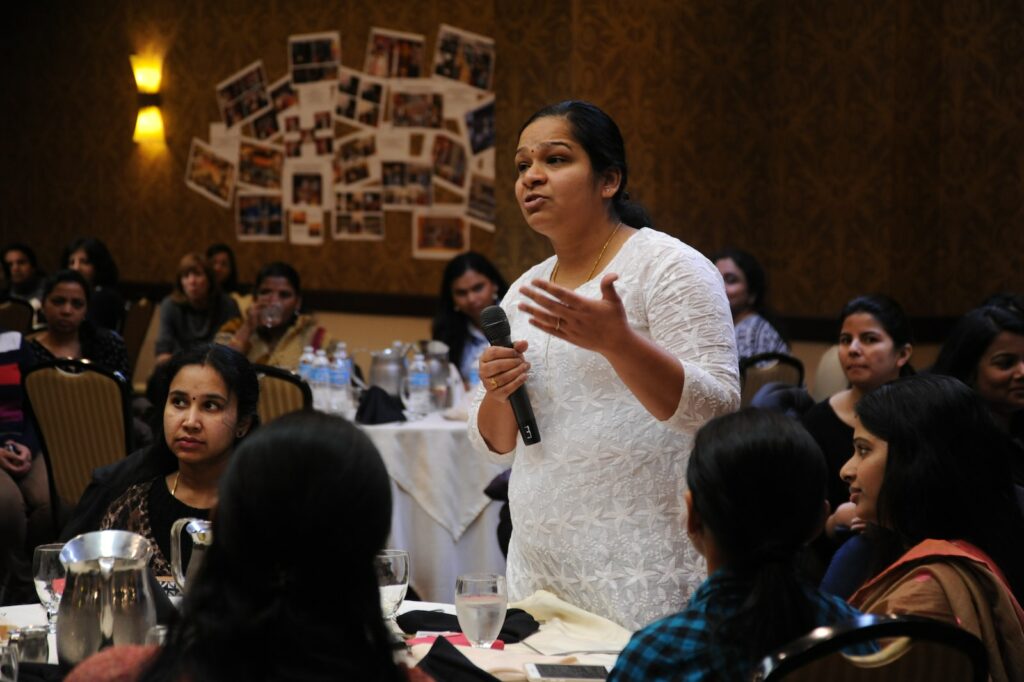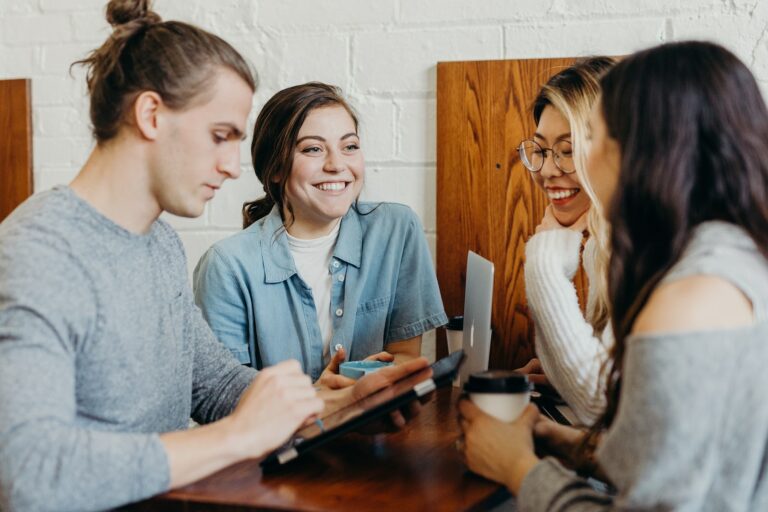Body Language Mastery: How To Improve Your Communication And Influence Skills

Do you find yourself struggling to communicate effectively with others? Do the words you say sometimes fall short of conveying what you really mean? If so, then body language mastery may be just what you need. By mastering the art of non-verbal communication, you can greatly improve your ability to influence and connect with people more deeply than ever before.
Body language is one of the most powerful tools in our arsenal when it comes to expressing ourselves and connecting with those around us. We often use hand gestures, facial expressions, and even posture without realising how much they reveal about us or how they affect other people’s perceptions of us. With a little bit of practice, anyone can master these subtle forms of communication and become skilled at using them to their advantage.
In this article we’ll explore the power of body language and discuss how mastering its nuances can help strengthen both professional relationships as well as personal ones. You’ll learn practical tips on how to interpret body language cues from others and also how to confidently project your own message through conscious manipulation of your own non-verbal signals. So if you’re ready to take control over your interpersonal skills, read on for everything you need to know about body language mastery!
Table of Contents
Understanding Microexpressions

The ability to understand and interpret body language is an invaluable communication skill. Microexpressions, which are facial expressions that occur in a fraction of a second, can reveal important information about how someone may be feeling. Being able to read these subtle clues helps one to better connect with others and increase their influence skills.
Power posture, vocal cues, and hand gestures all make up the components of body language mastery. To start improving your communication abilities, begin by mastering microexpressions. Watching videos of different people expressing emotions or paying attention to how friends react during conversations will help you identify basic reactions like surprise, anger, or fear. This knowledge can then be applied when speaking to colleagues or strangers as it allows for more accurate predictions on how they may respond to certain comments or questions.
Once you feel comfortable recognizing microexpressions, focus on incorporating power postures into your own body language repertoire. Examples include standing tall with hands on hips or leaning forward slightly while making eye contact with another person. Additionally, pay close attention to the tone and volume of your voice as well as its rate when trying to convey something effectively – this often requires practice but has been proven effective in establishing trust between two parties.
By combining the right words with strong nonverbal signals such as power postures and vocal cues , one can create powerful interactions that yield positive results without having said much at all. From there on out, utilising hand gestures becomes the next step towards perfecting body language mastery.
Utilising Hand Gestures

Hand gestures are an important part of body language basics, and can help you improve your communication and influence skills. They allow us to express our emotions without having to say a word. It’s important to note that the way we use hand gestures is highly dependent on culture, but there are some basic guidelines for using them effectively.
For example, when someone speaks with their hands open it conveys openness and trustworthiness. On the other hand, closed fists suggest that someone feels defensive or hostile. Additionally, pointing at something communicates authority and direction; this gesture needs to be used carefully as it could easily come off as aggressive or confrontational if done too aggressively.
In addition to these more common gestures, another effective way of communicating through hand movements is by utilising palm up palms down motions which indicate receptiveness vs resistance respectively. By learning how to read and interpret these signals correctly, you can ensure that your message is heard clearly and accurately even without saying a single word! This understanding will go a long way in improving your ability to influence others through body language.
Through mastering subtle hand gestures, you’ll have the power to make better connections with people around you and increase your chances of getting what you want out of conversations and interactions–opening yourself up to new possibilities while strengthening your existing relationships. Transitioning into mastering power postures builds upon this knowledge so that you’re able to maximise your potential impact in every situation.
Mastering Power Postures

Mastering power postures is an essential part of communication and influence. By using powerful stances, we can project confidence and authority in our interactions with others. But how exactly do you go about mastering these power postures? It’s all about understanding your personal space.
We tend to be conscious of the physical boundaries that exist between ourselves and other people. For example, when someone enters our personal space without permission it can make us feel uncomfortable or even threatened. On the flip side, if someone stands too far away from us during a conversation it might give off the impression that they don’t care what we are saying. That’s why learning how to use power postures within our own personal space is so important for effective communication.
When utilising power postures, it’s best to stand at a moderate distance from the other person – not too close, but not too far away either. Additionally, having good posture while standing up straight is also key to projecting confidence as well as appearing interested in what the other person has to say. By being aware of both our body language and our personal space, we can create positive connections that help promote strong communication and influence skills.
These elements combined will allow us to better understand how to navigate through conversations by using appropriate hand gestures and masterful power postures. Exploring this concept further, let’s dive into understanding personal space more deeply…
Exploring Personal Space

It’s no secret that body language plays a huge role in communication and can have an enormous impact on your relationships, both personal and professional. One of the most important aspects is understanding how to use personal space effectively.
The concept of personal space involves more than just physical distance; it also includes taking note of who you’re speaking with and deciding what kind of message you want to send. For example, if you’re talking to someone whose opinion matters to you- like a business associate or potential employer- then standing too close could be seen as being too aggressive or intrusive, while standing too far away may give off the impression that you lack interest or enthusiasm. On the other hand, when conversing with friends and family, appropriate distances may vary depending on the situation.
By paying attention to these subtle cues, we can gain insight into ourselves and others which helps us become better communicators and influencers. We learn how our presence affects those around us so that we can make conscious decisions about how we carry ourselves in any given conversation. It’s essential for improving rapport between parties involved in all types of interactions – from casual conversations to negotiating deals. Knowing how to manage this aspect of body language will go a long way towards honing your skillset!
From here, let’s dive into recognizing vocal cues for further enhancing our communication abilities
Recognizing Vocal Cues

The way we communicate verbally is just as important as the words that come out of our mouth. Recognizing vocal cues can help us understand what people are really thinking and feeling, even if they don’t say it directly.
We can recognize vocal cues in a variety of ways: by listening for changes in pitch or intonation, or paying attention to volume levels and pauses. For example, when someone’s voice gets quieter, it could indicate that they’re trying to avoid confrontation; similarly, an increase in tone could signal aggression. By reading these cues, we gain insight into how people feel about a certain situation.
It is also possible to identify more subtle messages through vocal tones and inflections. Someone might be saying one thing with their words but expressing something else entirely with their voice – this can give us valuable information on where the conversation is going. Being aware of these nuances helps us better interpret verbal communication and adjust accordingly.
By recognizing vocal cues and understanding what they mean, we can get better at communicating effectively and influencing others around us.
Developing The Ability To Read Nonverbal Communication

Developing the ability to read nonverbal communication is an essential part of body language mastery. Nonverbal cues such as posture, facial expressions and gestures are often more reliable indicators than verbal ones. By understanding how people communicate through their bodies, we can gain insight into what they’re really thinking and feeling.
Learning to recognize nonverbal signals requires practice and observation. We should pay close attention to our own body language – the way we sit, stand or gesture when talking with someone else – so that we can become aware of any unconscious messages being sent out. Similarly, it’s important to be mindful of others’ movements and mannerisms in order to determine their true feelings about a particular topic or situation. It takes time and effort but eventually you will start seeing patterns in the way people use their bodies to express themselves.
At the same time, it’s also important not to jump to conclusions based on only a few pieces of evidence. Every person has unique habits, quirks and physical characteristics; therefore, it pays off to get familiar with individual personalities before attempting to interpret their behaviour accurately. With enough experience reading between the lines of conversation and carefully observing other people’s body language, one can develop an impressive level of intuitive perception – allowing them to effectively engage with others in meaningful ways. Transitioning from this point into using these skills for enhanced communication will be discussed next
How To Use Body Language To Enhance Communication

Body language can be an incredibly powerful tool to enhance communication. It is the unspoken, nonverbal cues that we send and receive which often have a dramatic impact on our interactions. Understanding how to use body language effectively can help us influence people more positively and build better relationships.
Reading other peoples’ body language is essential for successful communication as it allows us to interpret their intentions before they even speak. Posture, facial expressions, gestures, and eye contact all play important roles in conveying meaning beyond words. For example, crossed arms may indicate stubbornness or defensiveness; whereas open palms could signal openness and willingness to cooperate.
By being mindful of our own body language during conversations, we can also convey messages about ourselves without saying anything at all – such as displaying confidence with good posture or smiling when listening attentively. Developing this awareness will lead to improved communication skills and make it easier to build trust and rapport with others. From here we can explore different types of body language further, discovering new ways to connect with those around us through subtle nonverbal signals.
Exploring Different Types Of Body Language
Body language is a powerful tool when it comes to communication and influence. We often think of body language as just physical gestures, such as handshakes or waving hello, but there are many other types that can have an impact on our interactions. In this article we’ll explore different types of body language and how they can help us communicate more effectively.
Nonverbal cues like posture and facial expressions are important forms of body language that can convey meaning in subtle ways. When someone stands tall with their shoulders back, for example, it usually indicates confidence and assertiveness. On the other hand, slumped shoulders could signal insecurity or lack of interest. Other nonverbal cues include eye contact, which shows attentiveness; nodding your head to show understanding; and smiling to express friendliness.
The way people use space during conversations also has significance—we tend to subconsciously move closer or further away from the person we’re talking to based on our comfort level with them. Open arms indicate openness while crossed arms suggest closed-off feelings about what’s being discussed. By paying attention to these signals, you can learn more about how others feel about the conversation and adjust accordingly.
Interpreting facial expressions is another key part of understanding body language—even small changes in expression can give insight into underlying emotions and intentions. Paying close attention to microexpressions—which last only fractions of a second—can be especially helpful in decoding someone’s thoughts and feelings quickly without words. With practice, you can hone your ability to read body language and become a better communicator overall!
Interpreting Facial Expressions

Facial expressions are an important form of non-verbal communication that can give us insight into how a person is feeling. We all understand the basics, like smiling when you’re happy or frowning when you’re sad. However, interpreting facial expressions often requires an understanding of more subtle cues and nuances in order to gain accurate meaning from them.
In order to accurately interpret facial expressions, it’s necessary to pay attention to details such as eye contact, mouth shape, eyebrow position, etc. For example, when someone raises their eyebrows slightly while looking away it could mean they feel uncomfortable with the conversation topic. On the other hand, if one side of their mouth is curved up higher than the other it may indicate scepticism or disbelief in what’s being said.
By taking time to observe people’s faces closely and considering different combinations of expressions along with context clues we can start to learn which signals mean what and improve our ability to better communicate and influence others through body language mastery. With practice we can become experts at reading between the lines and uncovering hidden meanings behind people’s facial expressions.
Learning How To Interpret Body Language

Learning how to interpret body language is an important part of mastering communication and influence skills. It’s the ability to read people’s emotions, intentions, and underlying urges through their body movements. To do this effectively requires understanding both verbal and nonverbal cues that we give off in different situations.
It can be hard to understand why someone makes a certain gesture or holds a particular stance without being consciously aware of it. But by learning how to observe subtle changes in posture or facial expressions, you can gain insight into what others are really thinking and feeling. Additionally, knowing how your own body language affects those around you can help you better communicate with them.
By focusing on the way people move their bodies when they speak, rather than simply relying on words alone, you can get a deeper sense of their feelings about a situation. This skill is especially useful for business professionals who need to build relationships with clients quickly and accurately assess conflicts within teams. With practice, anyone can begin to recognize patterns in body language that reveal hidden truths beneath the surface.
Uncovering The Meaning Behind Gestures

By understanding the meaning behind people’s gestures, you can gain insight into their thoughts and feelings more accurately than words alone. While a few basic motions are easy to decipher, uncovering the true intent of someone’s movements requires practice and observation.
To get started, pay attention to how a person stands or sits in relation to you — closer proximity often indicates interest or agreement while further away could indicate discomfort or disagreement. Similarly, open arms suggest openness while crossed arms might signal defensiveness. Identifying subtle cues like these not only helps you better interpret what’s being said but also gives you valuable information about the other party’s state of mind.
When analysing complex signals such as facial expressions and eye contact, consider both context and culture. A particular gesture may mean one thing in one situation yet something entirely different in another; likewise, some actions that have positive connotations in Western cultures could be seen as negative elsewhere. Being aware of these nuances allows us to interact with others more effectively without misreading their intentions.
By taking the time to study human behaviour closely, we can build our skill set for decoding nonverbal messages quickly and accurately — giving us a key advantage when it comes to navigating social situations successfully.
Tips For Effectively Utilising Body Language
Using body language is an important part of effective communication. It can be used to express ideas and feelings that words alone cannot capture, as well as influence the way others perceive you. In this section, we will explore tips for effectively utilising body language.
- Firstly, pay attention to your own body language. Be mindful of how the posture expresses your emotions; if you are feeling confident, stand up straight with your head high and shoulders back. Avoid crossing your arms or legs when speaking with someone – it could give off a sense of hostility or discomfort. Additionally, make sure to keep eye contact while talking in order to demonstrate attentiveness and understanding.
- Secondly, recognize what other people’s gestures mean. Pay attention to their facial expressions, tone of voice and movements so you can get a better understanding of how they feel about the conversation. For example, leaning forward often indicates interest whereas avoiding eye contact might suggest disinterest or unease. Observing these subtle cues can help you adjust your approach accordingly.
- Lastly, use appropriate gestures while speaking; point at objects you refer to or move your hands around to emphasise certain points in conversations. This ensures that people stay engaged in the discussion and helps them understand what you’re saying more easily. Practising good manners such as smiling warmly or shaking hands shows respect towards the person you’re communicating with as well.
By mastering these techniques, one can become more attuned to reading –and sending- nonverbal signals in any situation which may lead to improved relationships and increased trust among colleagues or friends alike.
Benefits Of Understanding Body Language
Using body language to communicate and influence can be a powerful tool. Understanding how to read people’s nonverbal cues and responding accordingly can help you achieve greater success in your relationships, both professional and personal. There are many benefits that come from understanding the intricacies of body language.
First, being able to interpret others’ body language gives you insight into their feelings, thoughts, and intentions. This allows you to have better conversations and build stronger relationships by reading subtle clues about what someone else is feeling or thinking without them having to explicitly say it. Additionally, when giving presentations or speeches, using appropriate body language helps you engage with the audience more effectively while also conveying confidence and authority.
Finally, understanding body language can help protect against potential pitfalls. For instance, if someone has an angry expression on their face but isn’t saying anything directly related to anger, then recognizing this may clue you in as to why they’re so upset before any damage is done due to miscommunication. Being aware of these subtle cues can go a long way towards avoiding conflict and maintaining positive connections with those around us.
In order for all of these benefits of body language mastery to manifest themselves in our lives, we need strategies for improving our skills further – something which will be discussed next.
Strategies For Improving Body Language Skills
Mastering body language is an important part of effective communication and influence. Understanding how to use your body language strategically can help you convey the right message in any situation, which is why it’s so important to know how to improve your skills. There are several strategies that can be used to gain proficiency in reading and using body language effectively.
One way to start improving body language skills is through practice – observing people’s reactions when speaking or interacting with them, or mimicking gestures or postures that show confidence and make a good impression. By noticing subtle details such as facial expressions or posture shifts, one can become more aware of their own nonverbal cues as well as those of others. Practising being mindful of these small details will aid in understanding the meaning behind different types of body language.
Another strategy for mastering body language involves taking time to study various cultural nuances related to different forms of communication. Body languages vary greatly from culture to culture, so researching differences between countries and regions may provide insight into better connecting with individuals from diverse backgrounds. For example, while direct eye contact is typically seen as a sign of respect in some cultures, other cultures may interpret this differently, so being culturally sensitive when communicating with someone from another background is essential.
By implementing these practices into everyday life, it’s possible to develop greater control over one’s own nonverbal cues as well as recognizing those made by others — leading to improved social interactions overall. With this newfound knowledge under your belt, you’ll be ready for analysing the impact of body language on social interactions.
Analysing The Impact Of Body Language On Social Interactions
Body language plays a vital role in how we communicate with others and can significantly influence our interactions. It’s important to understand the impact of body language on social situations in order to maximise communication and influence skills. By analysing its effects, we can identify areas for improvement so as to better express ourselves verbally and non-verbally.
When considering the importance of body language, one of the first things that comes to mind is how it affects our ability to create meaningful connections with others. Through facial expressions, gestures and posture, we are able to express emotions more effectively than verbal communication alone. Studying these forms of expression helps us build trust with those around us by showing them that we respect their feelings and opinions. Furthermore, subtle changes in body language allow us to make deeper emotional connections which leads to greater understanding between people.
In addition, studying the body language of others enables us to read their intentions from afar. This knowledge allows us to respond appropriately whether it be during an interview or when engaging in conversation with someone new. Being aware of this skill set also gives us confidence when interacting with unfamiliar environments because it lets us know what kind of behaviour will result in positive outcomes versus negative ones.
Overall, improving our understanding of body language has immense benefits both professionally and personally. With practice, mastering these techniques provides us with improved abilities not only when communicating but also in terms of influencing the conversations we have with others. Taking time out each day to observe how our own bodies move while speaking may help bring awareness into how they affect other people’s perception towards us thus resulting in better relationships all round.
Frequently Asked Questions
How Can I Start Using Body Language To Communicate?
The way we use body language can significantly impact how we communicate with others. It’s an important skill to master, as it can help you build relationships and influence people in a variety of ways. So, if you want to start using body language effectively, here are some tips for getting started.
Firstly, begin by paying attention to your own nonverbal cues – notice what messages you’re sending out through posture, facial expressions and gestures. Are they communicating something positive? Or could they be interpreted differently than intended? Once you become aware of the signals you’re giving off, practice making subtle but conscious changes that put across the message you intend.
Next step is being able to read other people’s body language too. Observe their stance and look for signs such as crossed arms or lack of eye contact; these give away clues about their feelings and intentions. Additionally, make sure to pick up on any cultural differences in communication styles; this will allow better understanding between yourself and those from different backgrounds.
Finally, remember that effective communication involves more than just words – focus on balancing verbal content with appropriate body language so that it reinforces what is being said rather than contradicting it. With time and practice, honing your body language skills will not only help strengthen your existing relationships but also open new doors for connections and opportunities down the road.
What Are The Most Common Body Language Mistakes?
Body language is an important part of communication, yet many people make common mistakes without even realising it. It’s essential to be aware of these errors in order to ensure you’re sending the right message and influencing others effectively. So what are some of the most frequent body language blunders?
First off, failing to maintain eye contact can give a false impression that you’re not interested or don’t care about what’s being said. Similarly, crossing your arms across your chest often conveys defensiveness or hostility when that may not be what was intended at all. On top of this, fidgeting or shifting from foot-to-foot could communicate anxiety or nervousness instead of confidence.
It’s also important to consider how we position our bodies around other people as this makes a huge difference. Sitting up straight with open posture helps create trust and shows respect for the person speaking. Additionally, leaning in slightly suggests engagement and interest which encourages conversation flow. Lastly, ensuring good personal hygiene such as grooming hair and nails shows consideration for other people too.
Making small adjustments like these will help make sure you have better control over nonverbal cues and more successful interactions overall. Knowing common body language slip-ups should put us in a stronger position to influence conversations positively – whether it be socialising casually or making business deals!
How Can I Tell If Someone Is Lying Based On Their Body Language?
Body language is an important part of communication, and being able to read it can be a powerful tool. It’s especially useful when trying to figure out if someone is lying or not. But how can you tell?
One way is to look for signs that indicate discomfort. When people lie, they often have trouble maintaining eye contact, fidget with objects, change their posture frequently, and avoid open gestures such as arms spread wide or hands on the hips. They may also touch their face more than normal and even sweat profusely.
If you suspect someone might be lying based on their body language, try asking them follow-up questions about what they just said. If further details are hard for them to provide or there’s a noticeable pause before answering, this could indicate dishonesty. Additionally, watch out for answers that are too vague or extreme; these too could point to deception. Knowing how to identify these warning signs can help you determine whether someone is telling the truth or not.
Is It Possible To Change My Body Language?
Body language is an important part of communication and can have a big impact on how we are perceived. Knowing how to interpret others’ body language and also effectively use our own can be powerful tools for improving our ability to influence other people’s thoughts and feelings. But is it possible to change the way we communicate with our bodies?
The answer is yes, but it takes practice. To make changes in your body language you must first become aware of what kinds of movements or gestures you are currently making when communicating with someone else. Once you identify these habits, you can then start practising new behaviours that will convey different messages. For example, if you tend to cross your arms while talking, try keeping them open instead. This conveys openness which may help build trust and rapport with the person you’re speaking to.
It’s also helpful to pay attention to the body language signals being sent by those around you so that you can respond accordingly. By understanding both verbal and nonverbal cues from others, such as facial expressions or tone of voice, you’ll be better equipped to adjust your own behaviour in order to create positive interactions and develop strong relationships with people. With dedication and knowledge about this form of communication, it’s definitely possible to improve your body language skills over time!
Do The Same Body Language Cues Mean The Same Things In Different Cultures?
Body language is a powerful tool for communication and influence, but it’s important to understand that the same cues may not have the same meaning in different cultures. It’s essential to be aware of cultural differences when attempting to use body language effectively.
In some cultures, nodding your head can indicate agreement, while in others it could mean disagreement or confusion. Similarly, eye contact has different meanings depending on where you are from – making strong eye contact might show confidence in some countries while being seen as rude in others. Even something as simple as crossing one’s legs can vary between cultures; this gesture could signify relaxation or comfort in some places but disrespect or even aggression elsewhere.
Therefore, when engaging with people from other backgrounds, it’s advisable to pay close attention to their cues and adapt accordingly. This includes learning more about local customs and etiquette so you can make sure you don’t inadvertently offend someone through an unintentional physical gesture. Doing research before communicating with someone from another culture will help ensure that you accurately interpret their body language signals and respond appropriately.
Conclusion
Body language is an invaluable tool for communication and influence. It can take time to learn how to use it effectively, but with practice, you’ll be able to express yourself in ways words alone can’t.
It’s important to keep in mind that body language varies from culture to culture, so make sure you’re aware of the cues and signals of those around you as well. Avoiding common mistakes like failing to maintain eye contact or crossing your arms will also ensure your message is being conveyed properly. Lastly, learning how to read other people’s body language can help you detect when someone is lying and give insight into their true intentions.
Overall, mastering body language takes patience and dedication, but if done correctly, it can greatly improve the quality of conversations both personally and professionally. With effort put into improving these skills, anyone has the potential to become a better communicator and influencer!


